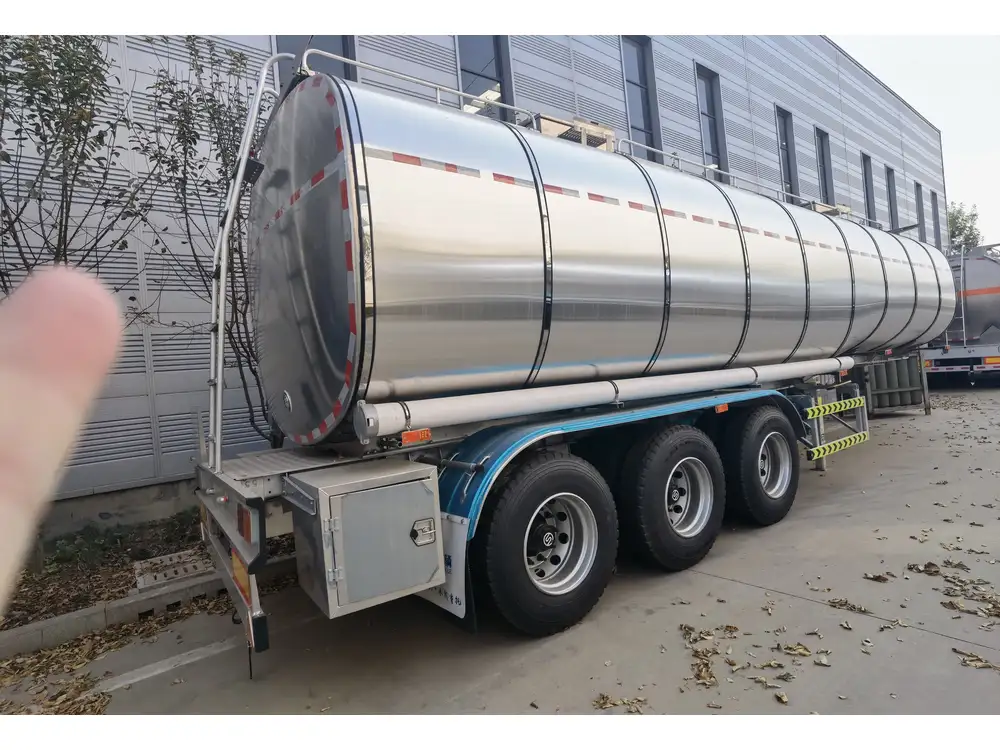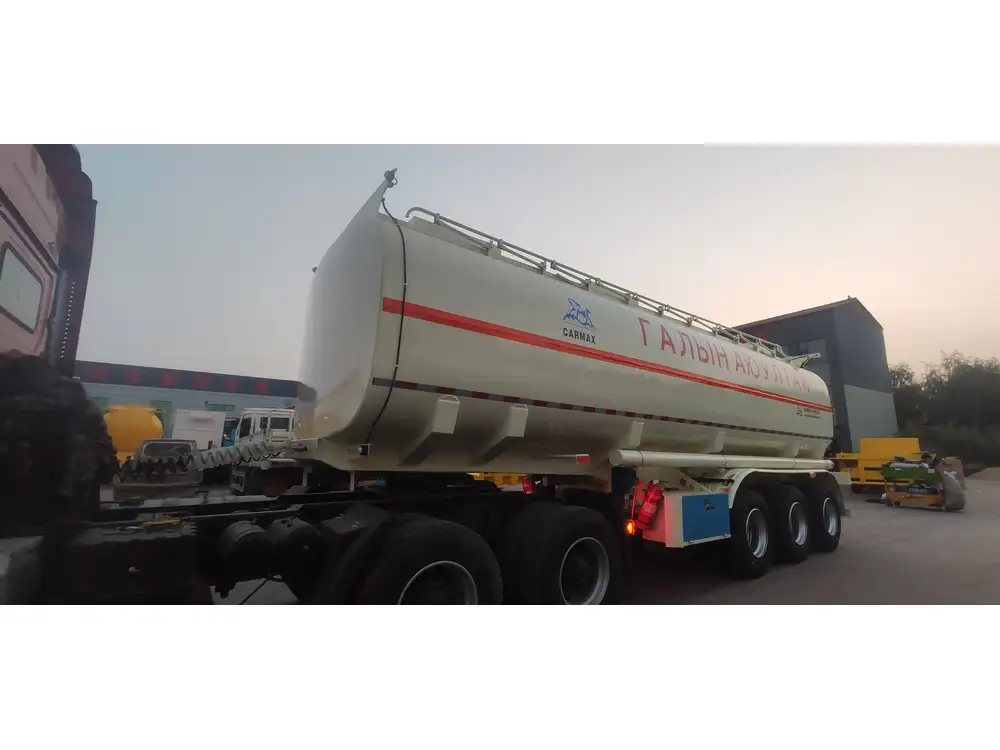Madagascar, an island nation rich in natural resources and economic potential, stands at a crossroads of opportunity and innovation. When it comes to the efficient management of these resources, particularly in the transportation and unloading of liquid goods, a reliable tanker unloading system becomes essential. As experts in the manufacturing of semi-trailers, we present a close examination of what a top-notch tanker unloading system entails, its importance, and available options in Madagascar.
Understanding the Tanker Unloading Process
To appreciate the value of a tanker unloading system, one must first understand the complexities involved in the unloading process. The unloading system serves as the bridge between transportation and storage, enabling a seamless flow that ensures efficiency and safety. Here’s a structured breakdown:
| Component | Function |
|---|---|
| Pump System | Transfers liquid from tankers to storage tanks. |
| Valves | Control the flow of liquids and prevent spills. |
| Hoses/Pipes | Facilitates the movement of liquid from tankers. |
| Control Systems | Monitors operations and alerts for any anomalies. |
| Safety Mechanisms | Includes sensors and emergency cut-offs to ensure safety. |
This systematic approach ensures that each element is perfectly synchronized, resulting in an efficient unloading process.
Benefits of a Reliable Tanker Unloading System
When we talk about the benefits of investing in a high-quality tanker unloading system, several critical facets emerge that specifically cater to Madagascar’s unique environment and market conditions:

1. Enhanced Efficiency
A properly designed unloading system minimizes wait times for tankers at the port or storage facilities. This not only speeds up the unloading process but also maximizes the overall throughput of operations, leading to better resource management.
2. Safety First
Given the volatility of liquids, particularly petroleum products, safety mechanisms integrated into modern systems are crucial. Properly designed unloading systems reduce the risks associated with spills, leaks, or accidents, which could lead to catastrophic consequences.
3. Cost-Effectiveness
Investing in a reliable system can drastically reduce operational costs in the long term. Efficient pumps and control systems lower energy consumption and maintenance needs, thus providing an excellent return on investment.

4. Compliance with Regulations
As Madagascar continues to evolve economically, adhering to national and international safety regulations is imperative. Modern tanker unloading systems are designed to meet these standards, ensuring that operations can proceed without legislative hindrance.
Types of Tanker Unloading Systems Available
Understanding the various types of tanker unloading systems on the market can help organizations make more informed decisions based on their needs. Here are some popular systems currently available for sale in Madagascar:
1. Gravity Unloading Systems
Utilizing gravity to transfer liquids is one of the simplest methods available. While this system is ideal for certain types of products, it may be inefficient for viscous materials.

2. Pneumatic Unloading Systems
These systems leverage compressed air to transport liquids, making them suitable for lighter materials. Pneumatic systems score high on speed but may not be compatible with all liquid types.
3. Submersible Pump Systems
Ideal for deep-tank unloadings, submersible pumps are submerged in the liquid to provide efficient transfer. They are often the go-to choice for heavier liquids but may require more extensive maintenance.
4. Diaphragm Pumps
These pumps use a diaphragm to create suction, making them versatile and effective for various applications. Their ability to handle different types of fluids makes them a favorite among operators.

Key Considerations for Purchasing a Tanker Unloading System
When acquiring a tanker unloading system in Madagascar, there are several important factors to consider to ensure optimal performance:
Liquid Type: Identify the specific types of liquids being handled, as this will determine which system is most suitable.
Capacity Requirements: Calculate the necessary capacity based on your operational needs and future expected growth.
Installation: Expertise in installation is vital; thus, you should engage with manufacturers who provide comprehensive installation services.
Maintenance and Upgrades: An efficient maintenance plan ensures long-term functionality. Regular upgrades may be necessary to adapt to newer technologies or compliance standards.
Local Support and Parts Availability: Ensure that there’s local support for parts and services to mitigate downtime.
Comparing Cost vs. Quality
In the context of Madagascar’s economic landscape, it’s important to weigh the costs against the projected quality. A low-cost option may seem tempting but may lead to higher long-term expenses related to maintenance and potential safety issues. On the contrary, a moderate investment in a high-quality system can yield significant savings and efficiency in the long run. It’s paramount to choose wisely—quality should never be sacrificed for the sake of price.
Case Studies: Successful Implementations

1. Port of Toamasina
The Port of Toamasina, Madagascar’s largest port, integrated advanced unloading systems that improved its efficiency metrics by 30% over two years. By transitioning from manual unloading processes to automated systems, they witnessed a dramatic decrease in unloading times and operational accidents.
2. Fuel Distribution Provider
A fuel distributor in Antananarivo implemented a modern pneumatic unloading system, significantly boosting its capacity to handle lighter petroleum products. The result was a 40% increase in productivity, reduced labor costs, and stellar compliance with safety regulations.
Conclusion
As the demand for efficient tanker unloading systems grows in Madagascar, organizations must invest wisely in cutting-edge solutions that not only meet their current needs but also future-proof their operations. At CarMax Vehicle, we are dedicated to providing high-quality tanker unloading systems designed to tackle the unique challenges of the Malagasy market. Our systems ensure efficiency, safety, and compliance, setting the foundation for sustainable growth in fluid management.

FAQs
1. What is the average cost of a tanker unloading system in Madagascar?
The cost can vary significantly based on the type and capacity of the system. On average, prices start from $20,000 and can exceed $100,000 for advanced systems.
2. How often should maintenance be performed?
Regular maintenance should be conducted semi-annually, with immediate inspections following any major operational changes.

3. Are there financing options available for purchasing these systems?
Yes, many manufacturers offer financing options, leasing plans, and bulk purchase discounts.
4. What certifications should the unloading system have?
Ensure the system meets local and international safety standards, such as ISO certifications and compliance with environmental regulations.













Reviews
There are no reviews yet.